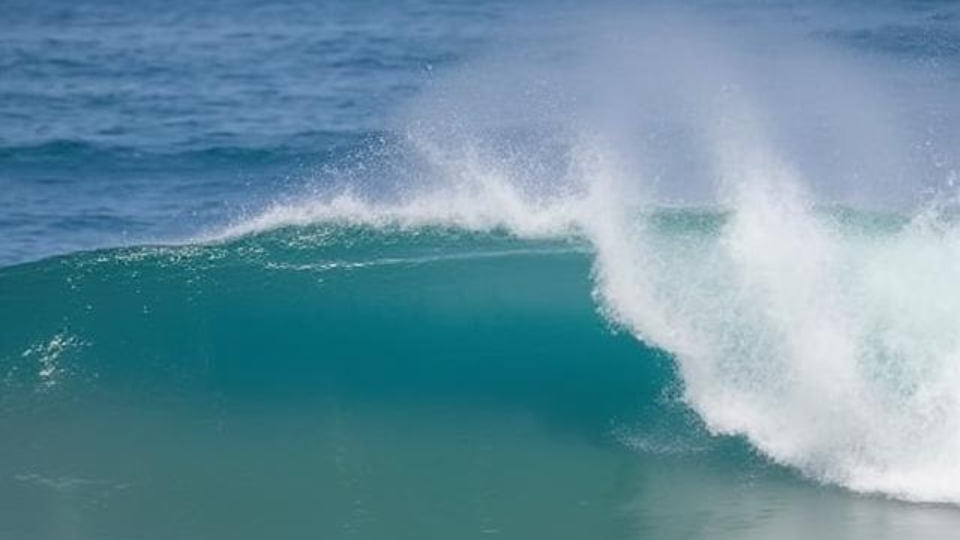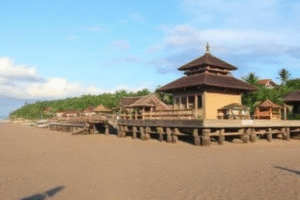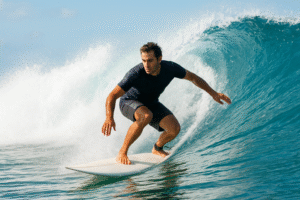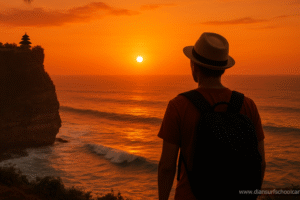
The Perfect Wave Size For Beginners
The Perfect Wave Size For Beginner, If you’re new to surfing, one of the most important things to consider is wave size. Too big, and you might struggle to paddle out or wipe out constantly. Too small, and you won’t get enough power to ride. So, what’s the ideal wave size for beginners?
The Sweet Spot: 1 to 3 Feet
For beginners, the perfect wave size is between 1 to 3 feet (knee to waist-high). These waves are small enough to be manageable but still offer enough push to help you catch and ride them.
Why Small Waves Are Best for Learning
- Easier to Paddle Into
Smaller waves don’t require as much strength to paddle into, making it easier for beginners to catch waves and pop up on their board.
- Safer and Less Intimidating
Wipeouts are part of surfing, but small waves make falling less scary and dangerous. You’re less likely to get caught in powerful currents or tossed around by big surf.
- More Time to Practice Balance
Gentle, rolling waves give you a chance to work on your stance, balance, and turning without being rushed by fast-breaking waves.
Other Factors to Consider
- Wave Type
Not all waves are the same. Soft, slow-breaking waves are the best for beginners. Avoid steep, hollow waves that break suddenly, as they can be harder to handle.
- Wind Conditions
Calm or light offshore winds (blowing from land toward the ocean) help create clean, smooth waves. Strong onshore winds (blowing from the ocean toward land) can make waves messy and unpredictable.
- Tide Levels
Mid-tide is often the best for beginners. At high tide, waves may be too weak, while low tide can expose rocks or reefs.
Best Beginner-Friendly Surf Spots
If you’re looking for great places to practice, here are a few top beginner surf spots:
- Waikiki Beach, Hawaii – Long, gentle waves perfect for learning.
- Byron Bay, Australia – Soft beach breaks with warm water.
- San Onofre, California – Consistent small waves, ideal for beginners.
- Canggu, Bali – Friendly waves with a fun, laid-back vibe.
Final Tips for Beginner Surfers
- Check the surf forecast before heading out.
- Use a soft-top surfboard for stability and safety.
- Always surf with a buddy or take a lesson.
- Respect surf etiquette and be mindful of other surfers in the water.
Ready to Ride?
Learning to surf is all about patience and practice. Start with small, friendly waves, and over time, you’ll gain the confidence to take on bigger challenges. The ocean is your playground—enjoy the ride!

Best Time to Visit Canggu: A Complete Guide for Travelers
The Best Time To Visit Canggu, Canggu has become one of Bali’s most popular coastal destinations—loved for its surf-friendly beaches, laid-back lifestyle, trendy cafés, coworking…
Read More
Bali Wet Season Surf Spots
Bali Wet Season Surf Spots. Most surfers dream of Bali’s dry season — long offshore winds, golden sunsets, and perfect west coast barrels. But here’s…
Read More
Intermediate Surfing Spot in Bali
Intermediate surfing spot in Bali. Bali is one of the most famous surfing destinations in the world. With its warm waters, consistent waves, and stunning…
Read More
Surf Nusa Lembongan: The Ultimate Surfing Destination in Bali
Surf Nusa Lembongan: The Ultimate Surfing Destination in Bali. If you’re seeking a surfing paradise away from the crowded beaches of Bali, Nusa Lembongan is…
Read More
Surf Lesson Birthday Gift Canggu Bali
Looking for a birthday gift that’s more exciting than another wrapped box or a simple celebration dinner? In Canggu, Bali, birthdays can turn into unforgettable…
Read More
Bali Travel Itinerary 5 Days: The Perfect First-Time Trip Guide
Planning your dream holiday to Bali but only have five days? Don’t worry — five days is enough to experience the island’s beautiful beaches, iconic…
Read More
